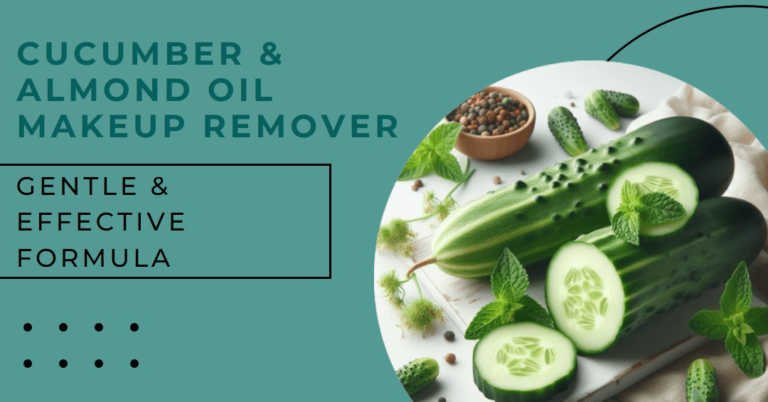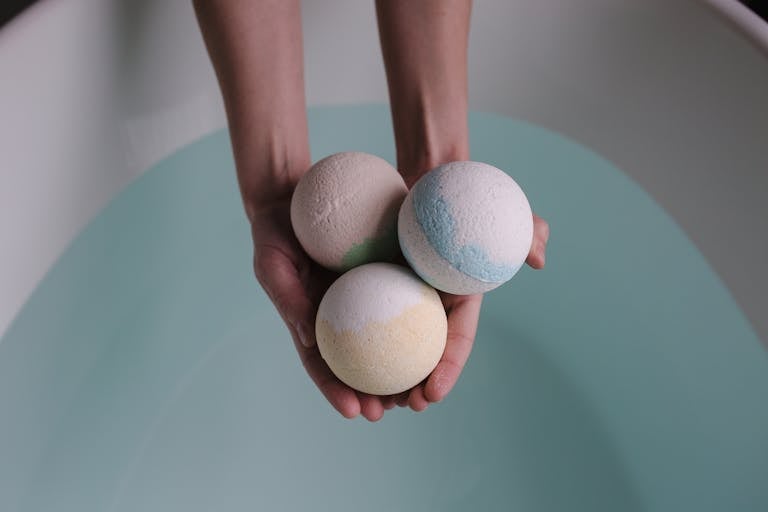Unlock the Power of Witch Hazel Toner: The Secret to Radiant Skin
Discover the ancient secret that’s revolutionizing modern skincare: witch hazel. This potent plant extract has been a cornerstone in beauty rituals for centuries, and today, it’s the star ingredient in countless toners. But what makes witch hazel so magical, and why should it be an essential part of your skincare arsenal? Let’s dive into the enchanting world of witch hazel toners and uncover the science behind their transformative power.
Key Takeaways
- Witch hazel toners are prized for their natural astringent properties, effectively reducing skin inflammation and minimizing pores.
- Ideal for acne-prone and oily skin types, witch hazel toners help balance oil production and soothe irritation.
- Rich in antioxidants, witch hazel toners protect the skin against free radical damage, promoting a healthier skin barrier.
- Versatile and multi-functional, witch hazel toners can address various skin concerns, from razor burns to sunburns.
- When choosing a witch hazel toner, consider your skin type and look for alcohol-free formulations for gentler care.
The Magic and Science of Witch Hazel
Witch hazel (Hamamelis virginiana) is a native North American plant with a rich history of medicinal use. Its bark, leaves, and twigs have been used for generations by Native Americans to soothe various skin ailments. Today, witch hazel toners continue to captivate skincare enthusiasts worldwide for their remarkable properties.
The secret behind witch hazel’s effectiveness lies in its unique composition. Rich in tannins, flavonoids, and other antioxidants, witch hazel toners offer powerful astringent and anti-inflammatory benefits. These natural compounds work together to:
- Tighten and shrink pores
- Reduce skin inflammation and redness
- Combat free radicals, promoting anti-aging effects
- Soothe and soften the skin
Scientific studies have confirmed the long-standing claims of witch hazel’s healing properties. The tannins in witch hazel toners give them their astringent nature, effectively shrinking and tightening the skin’s surface. This action helps reduce irritation and the appearance of pores, making witch hazel toners a go-to solution for those battling oily or acne-prone skin.
Choosing the Right Witch Hazel Toner for Your Skin Type
While witch hazel toners offer benefits for various skin types, selecting the right formulation is crucial for optimal results. Here’s a guide to help you choose the perfect witch hazel toner for your skin:
- Oily/Acne-Prone Skin: Look for witch hazel toners with a higher concentration of witch hazel extract. These formulations help control excess oil and reduce inflammation associated with acne.
- Recommended Product: Dickinson’s Original Witch Hazel Pore Perfecting Toner
- Pros: Effectively controls oil, unclogs pores
- Cons: May be too drying for some users
- Combination Skin: Choose balanced witch hazel toners that also contain hydrating ingredients like aloe vera or glycerin.
- Recommended Product: Thayers Alcohol-Free Rose Petal Witch Hazel Toner
- Pros: Balances skin, alcohol-free, contains soothing rose water
- Cons: Fragrance may not suit everyone
- Dry/Sensitive Skin: Choose alcohol-free witch hazel toners with added moisturizing ingredients.
- Recommended Product: Mario Badescu Witch Hazel & Rosewater Toner
- Pros: Gentle, hydrating, suitable for sensitive skin
- Cons: May not be strong enough for very oily skin
- Mature Skin: Look for witch hazel toners enriched with anti-aging ingredients like vitamin C or hyaluronic acid.
- Recommended Product: Neutrogena Pore Refining Toner with Witch Hazel
- Pros: Contains alpha and beta hydroxy acids for gentle exfoliation
- Cons: May cause initial purging in some users
DIY Witch Hazel Toner Recipes
For those who love a hands-on approach to skincare, here are some easy DIY witch hazel toner recipes tailored to different skin needs:
- Hydrating Witch Hazel Toner (For Dry/Sensitive Skin)
Ingredients:
- 1/2 cup alcohol-free witch hazel
- 1/4 cup rose water
- 1 teaspoon vegetable glycerin
- 5 drops lavender essential oil (optional)
Instructions:
- Combine all ingredients in a clean, dark glass bottle.
- Shake well before each use.
- Apply to face using a cotton pad after cleansing.
2. Clarifying Witch Hazel Toner (For Oily/Acne-Prone Skin)
Ingredients:
- 1/2 cup witch hazel
- 1/4 cup green tea (cooled)
- 5 drops tea tree essential oil
- 3 drops lemon essential oil
Instructions:
- Brew green tea and allow it to cool completely.
- Mix all ingredients in a clean bottle.
- Apply to face, focusing on oily areas.
3. Anti-Aging Witch Hazel Toner (For Mature Skin)
Ingredients:
- 1/2 cup witch hazel
- 1/4 cup aloe vera juice
- 1 tablespoon cucumber juice
- 5 drops frankincense essential oil
Instructions:
- Blend cucumber and strain to extract juice.
- Combine all ingredients in a clean bottle.
- Apply gently to face and neck after cleansing.
- Remember to patch test any new DIY recipe and store your homemade toners in the refrigerator. Use within two weeks for best results.
4. Balancing Witch Hazel Toner for Combination Skin
Ingredients:
- 1/2 cup alcohol-free witch hazel
- 1/4 cup rose water
- 2 tablespoons aloe vera gel
- 1 teaspoon vegetable glycerin
- 3 drops lavender essential oil (optional)
- 2 drops tea tree essential oil (optional)
Instructions:
- In a clean glass bottle, combine the witch hazel and rose water.
- Add the aloe vera gel and vegetable glycerin. Shake well to mix.
- If using, add the essential oils. These provide additional benefits but can be omitted for sensitive skin.
- Shake the bottle thoroughly to ensure all ingredients are well combined.
How to use:
- Cleanse your face as usual.
- Shake the toner bottle before each use.
- Apply the toner to a cotton pad or reusable cloth.
- Gently swipe the toner across your face, focusing on the T-zone and any areas prone to oiliness.
- Allow the toner to absorb into your skin before applying moisturizer.
This toner is designed to balance combination skin by:
- Using witch hazel to control oil in the T-zone
- Incorporating rose water and aloe vera to soothe and hydrate drier areas
- Adding glycerin for light moisture without heaviness
- Optional lavender oil for calming properties
- Optional tea tree oil for mild antibacterial effects on oily areas
Use this toner once or twice daily, adjusting as needed based on your skin’s response.
Remember to patch test any new DIY recipe and store your homemade toners in the refrigerator. Use within two weeks for best results.

Witch Hazel vs. Other Common Toner Ingredients
Amidst the flourishing market of toners, witch hazel stands out for its dual-action ability to cleanse and tone the skin effectively. While rose water and aloe vera are also revered for their toning qualities, witch hazel’s strength lies in its powerful astringent properties, making it particularly beneficial for those looking to combat oily skin and maintain a clear complexion.
Witch Hazel’s Role in Acne Treatment
For individuals grappling with acne, witch hazel can be a game-changer. Its astringent properties can help control excess oil production, one of the primary contributors to acne formation. Furthermore, witch hazel can aid in reducing the inflammation associated with acne, leading to a calmer, clearer complexion.
It’s important to note that while witch hazel can be an effective component of an anti-acne regimen, it may not suffice as a standalone treatment.
Benefits of Witch Hazel for Different Skin Types
The beauty of witch hazel lies in its versatility. It’s one of those rare ingredients that can benefit a wide array of skin types, with its balancing and clarifying actions being particularly appreciated by those with oily and combination skin. However, even those with dry or sensitive skin can find comfort in witch hazel, as long as it’s integrated into a suitable formulation that doesn’t exacerbate dryness or irritation.
How to Use Witch Hazel for Dry or Sensitive Skin
If you have dry or sensitive skin, incorporating witch hazel into your skincare routine requires a gentler approach to harness its benefits without causing irritation. Here are some tips to consider:
- Choose Alcohol-Free Options: Products containing witch hazel without alcohol are less likely to dry out or irritate the skin. Alcohol-free formulations help maintain the skin’s natural moisture balance while still providing the astringent benefits of witch hazel.
- Patch Test First: Before applying witch hazel to your face, do a patch test on a small area of skin to ensure you don’t have an adverse reaction.
- Use in Moderation: For dry or sensitive skin types, using witch hazel sparingly is key. Start with once-a-day applications, or even every other day, to allow your skin to adjust without becoming overly dry.
- Combine with Moisturizers: After applying witch hazel, follow up with a hydrating moisturizer to help lock in moisture and protect the skin barrier. This step is crucial to prevent drying and keep your skin healthy and hydrated.
- Look for Blended Products: Many skincare products incorporate witch hazel alongside other hydrating ingredients. These formulations can offer the benefits of witch hazel while minimizing the risk of dryness or irritation, making them ideal for sensitive skin types.
By following these guidelines, individuals with dry or sensitive skin can enjoy the astringent and anti-inflammatory benefits of witch hazel without compromising their skin’s moisture levels or comfort.
Recommended Witch Hazel Products for Sensitive or Dry Skin
For those with sensitive or dry skin looking to integrate witch hazel into their skincare regimen without compromising on hydration, here are two products that stand out:
- Thayers Alcohol-Free Rose Petal Witch Hazel Toner: This gentle toner combines witch hazel with rose water and aloe vera, offering the soothing and astringent benefits of witch hazel alongside the hydrating and calming properties of its other key ingredients. Free from alcohol, it ensures your skin remains moisturized and irritation-free.
- Mario Badescu Witch Hazel & Rosewater Toner: Another exceptional product that harnesses the power of witch hazel along with the soothing effects of rosewater. This toner aims to clarify and refresh the skin without stripping it of its natural oils, making it an excellent choice for those with dry or sensitive skin types looking for a product that balances rather than dries.
Incorporating Witch Hazel into Your Skincare Routine
Integrating witch hazel toner into your daily skincare routine requires a thoughtful approach. Consistency and finding the right concentration that works for your skin are key. It’s also wise to introduce new products gradually to monitor your skin’s response. For those new to witch hazel, starting with a toner that contains a lower percentage is advised to mitigate any potential drying effects, especially for those with dry or sensitive skin.
Potential Side Effects and Considerations
While generally well-tolerated, witch hazel can cause dryness, especially if used in higher concentrations or if skin is dehydrated. This is why it’s important to choose a toner that balances witch hazel with hydrating ingredients, especially for those with drier skin types. If you have a known allergy to plants in the Hamamelidaceae family, it’s crucial to avoid products containing witch hazel.

Refresh your skin with witch hazel toner
Expert Insights and Recommendations
Seasoned skincare experts universally praise witch hazel for its clarifying and balancing properties. They stress the importance of selecting high-quality witch hazel products and paying attention to the overall formulation of skincare products that contain witch hazel to ensure they are not too harsh or irritating for the skin.
“Dermatologists often recommend witch hazel for its ability to calm inflammation and soothe sensitive skin. Its natural antioxidant and astringent properties make it a versatile ingredient in combating acne and enhancing skin health without over-drying,” notes Dr. Samantha Wells, a board-certified dermatologist specializing in natural skincare remedies.
Conclusion
Witch hazel toners have earned their place as a skincare staple, offering a natural and effective solution for various skin concerns. From balancing oily skin to soothing sensitivity and fighting signs of aging, these magical elixirs prove that sometimes, the most powerful skincare ingredients come straight from nature.
By incorporating witch hazel toners into your daily routine, you’re not just following a trend – you’re tapping into centuries of natural skincare wisdom. Whether you choose a store-bought formulation or craft your own DIY version, witch hazel toners can be the key to unlocking your skin’s natural radiance.
Call to Action
Ready to experience the magic of witch hazel toner for yourself? Start by choosing a product that matches your skin type, or try one of our DIY recipes. Share your witch hazel journey in the comments below, and don’t forget to subscribe for more skincare secrets! Remember, great skin doesn’t happen by chance – it happens by embracing the power of nature’s finest ingredients, like witch hazel.
FAQ
Q: Can witch hazel replace my daily cleanser?
A: No, witch hazel is best used as a toner after cleansing. It is designed to tighten pores and refine the skin’s texture, not to remove dirt and makeup.
Q: Is witch hazel suitable for all skin types?
A: Witch hazel can benefit various skin types, especially oily and combination skin. However, those with extremely dry or sensitive skin should use it cautiously and opt for products that combine witch hazel with hydrating ingredients.
Q: How often should I use witch hazel in my skincare routine?
A: Start by using witch hazel once a day and observe how your skin reacts. If your skin tolerates it well, you may increase its usage to twice a day, morning and night, as part of your toning step.
Q: Can I use witch hazel on acne-prone skin?
A: Yes, witch hazel’s astringent properties can help control excess oil, reduce inflammation, and potentially prevent future breakouts. However, it’s best used as part of a comprehensive acne treatment regimen.
Q: Are there any side effects of using witch hazel?
A: While witch hazel is generally safe for most people, some may experience dryness or irritation, particularly with overuse or if their skin is sensitive. Always conduct a patch test before introducing a new product to your routine.
Additional Resources on Witch Hazel
For those wishing to learn more about witch hazel and its benefits within skincare routines, here are some authoritative resources that can offer deeper insights:
- [National Center for Biotechnology Information (NCBI)](https://www.ncbi.nlm.nih.gov/): Provides a wealth of scientific research articles and studies on the properties of witch hazel and its effectiveness in skincare.
- [American Academy of Dermatology (AAD)](https://www.aad.org/): Offers expert advice and recommendations on how witch hazel can be incorporated into a skincare routine, especially for those with specific skin concerns.
- WebMD: Features detailed articles on witch hazel, including its uses, benefits, and any potential side effects to be aware of.
- Healthline: An excellent resource for understanding the pros and cons of witch hazel in dermatology, with articles reviewed by medical professionals.
These resources can provide a more comprehensive understanding of witch hazel and help guide your decisions on incorporating it into your skincare regimen.







